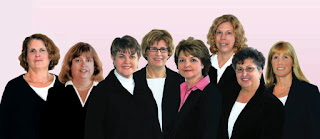 |
| Visitability makes it easier to manage with limited mobility. |
by Lynn Wilson, Founder of The
CareGiver Partnership
Read on to learn how “visitability” —
specific accessibility features that make it easier for those who develop
mobility impairment to visit or remain living in their own homes — is becoming
the new standard and why it’s good news for us all.
As the baby boomer generation
continues to influence our culture and economy, today’s builders, architects
and designers are putting more focus on helping aging seniors remain in their
homes by providing greater accessibility. One area of focus is on “visitability.”
“Visitability” is a movement to
incorporate specific accessibility features into home construction. It means
someone with limited mobility can accept invitations to visit friends and
family because he knows the home is accessible. It also means a home can
accommodate someone who loses mobility later in life, instead of forcing her to
make expensive renovations or move to a nursing home.
Key Features
A home with visitability has three key
features: at least one zero-step entrance to the home from a driveway or
sidewalk; interior doors with at least 32 inches of clear passage space; and at
least one wheelchair-accessible bathroom on the main floor. If designed to
accommodate a resident with limited mobility, essential features include wall
switches and outlets at reachable heights, reinforced bathroom walls to allow
for installation of grab bars, and a main-floor bedroom or space that can be
converted to a bedroom.
As you may have read in an earlier
post, we are in the process of constructing a home designed around
aging-in-place and visitability concepts. It’s designed with four zero-step
entrances, 36-inch-wide doorways, a wheelchair-accessible full bath on main
floor, and first-floor master suite with wide, zero-step shower and supports
for installing grab bars. Additional features built around safety and mobility
include ample high-visibility lighting with long-life, energy-efficient LED
bulbs and a dumbwaiter that can be later replaced with an elevator if needed.
Construction of our ranch-style home in Neenah, Wis., began in May and is
expected to be completed by Nov. 1.
.jpg) |
| The aging-in-place demonstration center incorporates all key visitability features. Learn more about its progress. |
How You Can Benefit
Our goal in publishing progress of
this home is to help our customers and all seniors prevent debilitating falls
and employ best practices for aging in place safely, comfortably and affordably.
While we’re in the process of putting together our best practices guide, be
sure to download our free home safety guide, “It All Starts with a Fall.”
About
The CareGiver Partnership. The CareGiver Partnership helps caregivers and their
loved ones with answers to their caregiving questions, including information
about home health care products and supplies, from our Wisconsin-based team of
Product Specialists who are all current or former caregivers. The company’s Web
site provides the largest online library of resources on subjects most
important to caregivers — from arthritis to assisted living, and Parkinson’s to
prostate cancer — as well as access to more than 3,000 home care products for
incontinence, skin care, mobility, home safety and daily living aids. The
CareGiver Partnership was founded in 2004 by Lynn Wilson of Neenah, Wis. Visit
http://www.caregiverpartnership.com to learn more or call 1-800-985-1353. Help
support this ad-free blog by answering several questions about caregiving here. It will take just two minutes.
 |
| Let us help with your aging in place and other needs. |
Watch this video to learn more about making a home safer for seniors.









0 comments:
Post a Comment